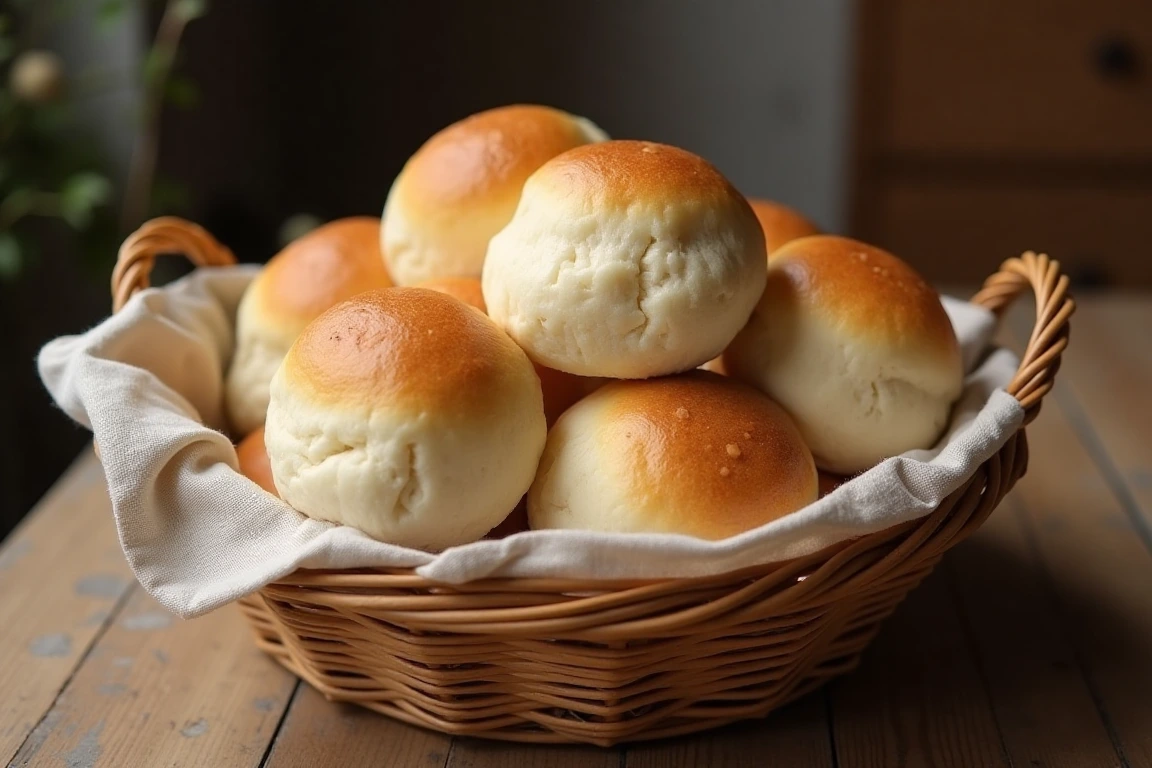Ingredients in white buns include finely milled white flour, which gives them their renowned soft texture and subtle taste. These buns have a fascinating story rooted in the ancient bread-making tradition. The first time they were made, they used carefully selected components, and they were regarded as a high-end item only available to those with wealth. As baking techniques and flour refining methods developed, white buns gained popularity, spreading through trade routes and cultural interactions.
For centuries in East Asia, the tradition of steamed breads, like Chinese baozi and mantou relied on these basic ingredients of white buns and made them a common staple. In Europe white buns came into importance in the Industrial Revolution when improved milling techniques allowed refined flour to be less expensive. These buns are loved by many due to their versatility and the capacity to be a perfect match for many dishes.
Ditch Dinner Stress — Cook Smart, Not Hard 🍽️
35 quick & budget-friendly 5-ingredient dinners to save your evenings. Simple. Delicious. Ready in 30 minutes or less.
Popularity Across Cultures
White buns are adored all over the world and are able to adapt to the tastes and styles of different cuisines:
- East Asia: White buns that are steam-cooked are famous made of a variety of tasty ingredients. From the spicy the char siu bao to the sweet char siu bao in China and the sweet the anpan in Japan the buns are a staple of breakfast tables and street food stalls too.
- Western cultural practices White buns are associated to hamburgers, sandwiches and other burgers. Their fluffy, soft texture and mild flavor make them a perfect companion to a variety of fillings that enhance the flavor without dominating the flavor.
- South Asia: In India white buns like pav play an important role for street-food. They are typically toasty and served alongside spicy meals like pav vada as well as pav Bhaji mixing soft bread with strong flavours.
From baked to steamed, to toasty, white buns have surpassed boundaries and become a classic of the culinary world consumed in many different ways. Their flexibility and easy appeal make them a cult favorite all over the world.
Flour: The Foundation of White Buns
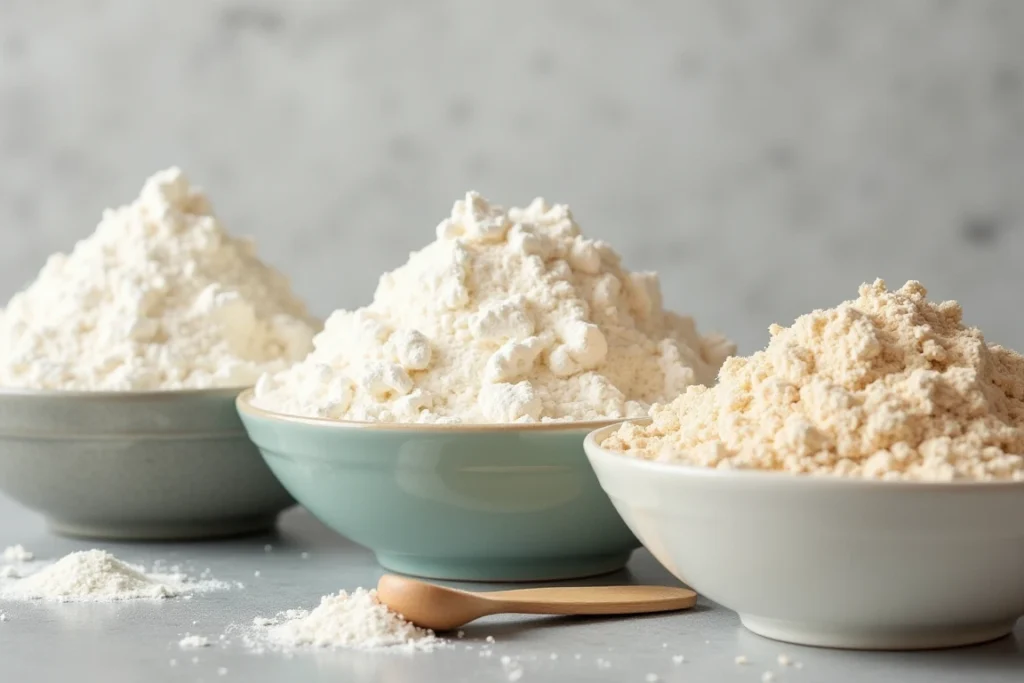
The flour is the main ingredient used to make white breads and directly affects the texture, flavor along with their overall flavor. One of the most important ingredients of white buns are two kinds of flour are commonly utilized:
Types of Flour Used
- All-Purpose Flavor The flour is a balanced source of protein between 9 and 12 percent, which makes it perfect for making soft fluffy, soft buns. It’s ideal for both baked and steamed varieties because it can produce a soft and fluffy crumb. The wide availability for all-purpose flour has made it an ideal option for bakers at home and commercial kitchens. If you’re looking to explore new ways to use flour, this matcha muffin recipe made with almond flour can be a source of an idea of inspiration.
- Bread Flour with a higher protein content of between 12 14% to 12 percent bread flour is ideal for buns that require an extra firm, chewy structure, like the hamburger buns and dinner rolls. Proteins contribute to better gluten growth, which results in higher rise and slightly heavier texture that is perfect for recipes that require a lot of strength.
Role of Gluten in Creating Structure
Gluten, the protein present in the wheat flours, play a crucial role in defining the shape and texture of white buns.
- Flexibility and Elasticity When flour mixes with water, the gluten proteins form a stretchy elastic network. This flexibility lets the dough hold air, which results in the appearance of a soft, airy texture when it rises.
- Stability and Structure Gluten’s strength offers the required support to the dough throughout baking and proofing. Without enough gluten, buns can collapse or lose volume, resulting in dense or unbalanced result.
Water and Its Role
Water is a key ingredient in the making of white breads in that it is able to activate the protein in the flour and starches, triggering dough creation. One of the most important ingredients of white buns water plays crucial roles in ensuring hydration is maintained and quality. These are vital to ensure the best texture and structure of the finished product.
The Importance of Hydration
- Hydrogenation and Gluten formation The presence of water allows gluten proteins in the flour to join and form the elastic web that allows the dough to entrap gasses during fermentation. This gives the dough the airy, light texture that white buns are known for.
- Impact on texture The ratio of water to flour directly influences the texture of the dough. Higher levels of hydration result in lighter, fluffier and softer buns while lower levels result in an even more dense structure. The right balance between the two is crucial.
- Ease of handling The dough that is well-hydrated is easy to mix and form, a crucial element in creating uniformly shaped buns.
Effects of Water Quality and Temperature on Dough
The temperature and quality of water have a significant impact on the yeast activity, development of gluten and overall performance of dough.
- Water Quality :
- The Soft Water contains less minerals and increases the gluten’s elasticity, which results in soft dough.
- Hard water with more minerals, it may strengthen gluten too much, leading to more brittle buns.
- Chlorinated water can hinder yeast activity; using water dechlorinated or purified is recommended to ensure reliable results.
- Water Temperature :
- Lukewarm water (90degF/32degC): Ideal for triggering yeast and encouraging continuous fermentation.
- Cold Water: It slows down fermentation, which is useful for extending proofing times in order to produce more complex flavors.
- Hot water is able to cause yeast to die and stop the dough from rising completely.
By managing the hydration levels as well as water quality and temperatures, bakers are able to ensure the best fermentation and development of gluten. This produces white buns that are soft, delicate and beautifully textured and embodies the distinctive characteristics of bread that is well-crafted.
Yeast: The Rising Agent
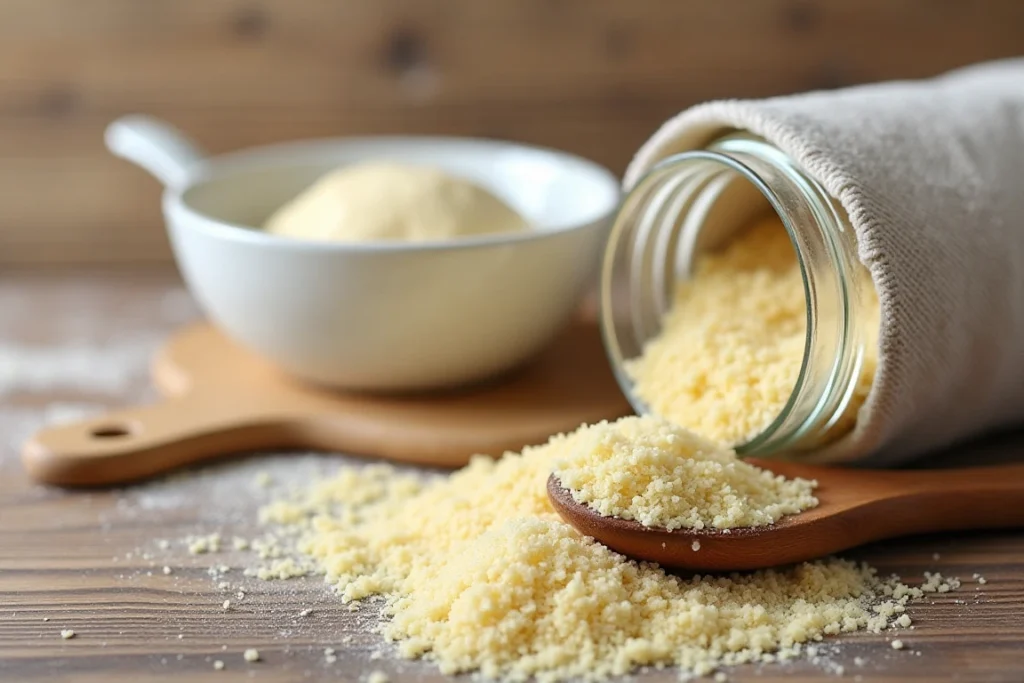
Active Dry yeast in comparison to. Instant Yeast
The yeast is a key component of white buns that is responsible for leavingning and forming their airy, soft texture. One of the most important ingredients of white buns yeast is a standout because of its crucial function in fermentation. Dry active yeast, as well instant yeast are among the most sought-after options, both with their own unique qualities and advantages in baking.
- Active Dry Yeast :
- This yeast type is comprised of granules, which need to be rehydrated prior to use. It is typically dissolved into hot water (about 100degF, or 38degC) and a small amount of sugar in order to activate it.
- Active dry yeast is lower rise time when compared to instant yeast, which makes it ideal for recipes that need more time to proof.
- It is extensively used by bakers who are at home and yields consistent results however it does require a little more effort.
- Instant Yeast :
- Also called bread machine yeast, or rapid-rise Instant yeast is softer in texture and mixes with dry food items, without the need to rehydrate.
- It is more efficient that active yeast and dry, usually decreasing the time to proof while producing fluffy and light-colored buns.
- Instant yeast is a great option in recipes that require faster rise times, which makes it an ideal choice for time-saving baking.
Both kinds of yeast are compatible in many recipes, however adjustments to proofing times might be required based on the yeast used.
How Yeast Works to Make Buns Fluffy
It is a living thing which feeds off sugars and starches contained in the dough, generating carbon dioxide (CO2) and the ethanol that is a byproduct of. This process, referred to as fermentation is the primary ingredient to the fluffy white buns.
- gas production as yeast ferments it releases CO2, which is trapped in the gluten network that is formed from the flour. Gas bubbles grow during baking and proofing which causes the dough to rise, giving it the light, airy structure that white buns are known for.
- Taste Development Fermentation can also contribute for the flavour of these buns. The ethanol that yeast produces disappears when baking and leaves the behind subtle, complex flavor notes that add to the overall flavor.
- The Process of Proofing Proper proofing is crucial for allowing yeast to do its magic. In this stage the dough must expand by a factor of two as yeast ferments. Overproofing could result in the structure being collapsed as well as underproofing could cause heavy, dense buns. To learn more about the process of fermentation, you may get tips on how to create the popular crookie beneficial.
If they choose the correct kind of yeast and knowing the underlying science behind it bakers can create perfect white fluffy buns each time.
Sugar: Sweetness and Activation
How Sugar Activates Yeast
Sugar is a key element in the white buns that plays a vital part in activating yeast during the process of making dough. While yeast is able to ferment naturally occurring starches found in flour, sugar can provide the yeast with a quick, easy-to-digest food source that can speed up the process of fermentation and increasing your buns’ overall taste.
- yeast activation When sugar is dissolved into water and then mixed together with yeast increases the activity of yeast. The yeast breaks down the sugar, resulting in carbon dioxide (CO2) and alcohol more rapidly. The initial boost in CO2 helps the dough rise quicker and makes sugar especially useful for recipes that require a soft, fluffy and light texture.
- Regulated Fermentation The right amount of sugar will ensure constant fermentation. Although sugar helps in the activation of yeast, too much sugar may draw water away from yeast cells by the process of osmosis, which can inhibit their function. A moderate quantity (typically 1 tablespoon for each recipe) is crucial to optimum performance.
Other Roles of Sugar in Flavor and Crust Formation
In addition to its function in triggering yeast, sugar has many other functions in improving the texture, flavor, as well as the appearance and taste of buns made from white sugar.
- Flavor Enhancement :
- Sugar imparts a slight sugary flavor that is and is an excellent complement to the sweet or savory fillings usually served by white breads.
- In the process of fermentation, sugar is responsible for the creation of alcohols and organic acids that enhance the the flavor of the baked buns.
- Crust Formation :
- Sugar plays an important part during the Maillard reaction, a chemical reaction that occurs during baking. It is the main reason for the golden-brown color and a slightly crispy exteriors of the white buns.
- As the sugar melts under heat, it forms an extremely thin, glossy crust that improves the bun’s appearance as well as its flavor.
- Moisture Retention :
- Sugar can help keep moisture in the dough and keeps the buns soft and supple for a longer time after baking.
For white-butter recipes sugar is more than sugar is a sweetener. It’s also a multi-functional ingredient that helps activate yeast as well as enhances flavor. It also helps to enhance the texture in the finished product.
Salt: Enhancing Flavor
Balancing the Flavors
Salt improves the flavor of white buns by amplifying natural flavor from the ingredient. It helps balance the sweetness of sugar, and helps prevent the buns from tasting dull. A tiny amount of salt makes sure that the flavors are balanced giving depth and not overpowering the overall flavor.
How Salt Strengthens Dough
Salt plays an important structural role inside the dough. It improves that gluten-based network which makes the dough more flexible and pliable. Salt also slows down yeast activity, helping limit fermentation. This leads to evenly-risen buns that have a soft yet firm texture.
Fat: Adding Softness
Types of Fats Used
Fats are the key ingredient in creating the soft, delicate texture of white buns. The most commonly used fats are:
- Butter Butter: Provides an intense flavor and a smooth texture to the buns, making them fluffy and delicious. It is commonly utilized in baking buns due to its distinct taste.
- Oil neutral oils such as canola and vegetable oils can be used to create softness, without altering the flavor. They are often employed in steamed as well as baked buns.
- Shortening can create an easier, fluffier and lighter texture through interfering with the formation of gluten. It is often utilized in commercial recipes to ensure consistency in outcomes.
The Science Behind Fat and Tenderizing Dough
Fat plays a vital part in softer dough, coating it with proteins, which restricts the development of gluten. This creates a soft and thinner crumb. In addition, fat improves the dough’s elasticity and makes it easier to form as well as less likely to break. When baking, fat keeps moisture, making sure that the buns remain fresh and soft for a longer period of time.
Milk and Its Alternatives
How Milk Enriches Dough
Milk improves the taste of white buns, contributing the texture and flavor in addition to their nutritional worth.
- Texture Milk proteins help make the dough stronger, resulting in a soft and fragile crumb. The natural fats found in milk give it a richness and a moisture making a more fluffy bun.
- Flavor The sugars in milk add a little sweetness and assist in the browning process during baking, creating a golden crust on buns.
- Nutritive Value Milk is rich in protein and calcium and makes buns healthier.
Non-Dairy Options for Milk in Buns
For those who do not want the dairy industry, there’s many alternatives that will still enhance the dough
- Plant-based milks: Soy, almond Oat, coconut, or almond milk may substitute the cow’s milk. Make sure to choose unsweetened varieties for the control of taste.
- Water with fat: Mixing water with a little oil or vegan butter can mimic the milk’s richness.
- Coconut Cream: The creamy, rich texture perfect for more sweet buns.
These choices allow flexibility for food preferences without compromising on high-quality buns.
Eggs: Optional but Beneficial
Eggs aren’t always needed to be an ingredient in white buns however they are typically used to enrich the dough in a variety of ways. In the plethora of ingredients found in white buns eggs stand out because of their ability to enhance the flavor and texture. This vital component of white buns aids in creating a more rich dough by supplying flexibility and moisture. Incorporating eggs among the components in the white buns will result in soft, more tender crumb, which can improve its overall taste. When choosing the appropriate ingredients for white buns like eggs, bakers are able to customize their recipes to produce desired outcomes.
When and Why Eggs Are Included
Eggs aren’t required to be the primary component in white buns however they are frequently used to improve the dough in a variety of ways. They are a versatile component in buns made of white flour eggs are a key ingredient in their texture and flavor and structure of the bun, making them a great ingredient for making moister and richer buns.
- Enrichment Eggs help to create an enriched dough, which makes the buns more supple and delicious.
- Structure The proteins found in eggs help strengthen dough, enhancing its elasticity, and assisting it to keep its shape throughout baking and proofing.
- Binding Eggs function as binders that keeps ingredients in good order for a more consistent, smooth dough.
Effects on Texture, Color, and Flavor
The addition of eggs has a significant impact on the final product
- Texture Eggs soften buns and provide them with a soft airy crumb. They also help retain moisture, making sure that the buns stay moist.
- color: Eggs’ natural pigments provide the buns with golden hues, both in the dough and in the crust, which enhances their appearance.
- Flavor Eggs provide subtle richness and flavor that compliments sweet and savory dishes.
Although they aren’t essential eggs can enhance the taste of white buns, making them more soft and more delicious, as well as visually attractive.
Additional Ingredients for Variation
Seeds, Herbs, and Spices
The addition of seeds, herbs, and other spices in white breads are a great way to increase the flavor, texture and appearance.
- Seeds Sprinkle sesame, poppy or sunflower seeds over buns for extra crunch and a rich, nutty taste. These are great for the burger buns, or for artisanal rolls.
- Herbs The addition of freshly-cut or dried herb such as rosemary, thyme or chives in the dough will give it an aromatic flavor, ideal for buns with savory flavors.
- Spices Ground spices such as cinnamon cardamom, nutmeg, or can be added to create an aromatic, sweet scent and garlic powder can enhance savory choices.
Sweet Sweet. Savory Adaptations
White Buns are adapted to be used in sweet or the savory needs.
- Sweet Buns add sugar honey, honey or sweet fillings such as custard or jam to create buns that are suitable for desserts or breakfast. Sprinkles of powdered sugar or glaze add a touch of elegance.
- Delicious Buns Reduce sugar, and add ingredients such as olives, cheese or bacon. These buns are great for sandwiches, or to add to stews and soups.
This variety of buns offers endless possibilities to customize white buns to suit any occasion or meal.
The Dough-Making Process
Steps to Combine Ingredients
Making white buns from dough requires a methodical process to ensure a consistent taste and texture
- Mixing Dry ingredients Mix sugar, salt, flour and yeast in one large bowl. This ensures even distribution prior to adding liquids.
- Incorporating Wet ingredients Add water gradually eggs, milk or other liquids then add the fat (like butter and oil). Mix until a coarse dough is formed.
- Making It Work Mixture: Knead till all the ingredients have been joined, forming a firm dough, with a slight sticky.
Importance of Kneading and Resting
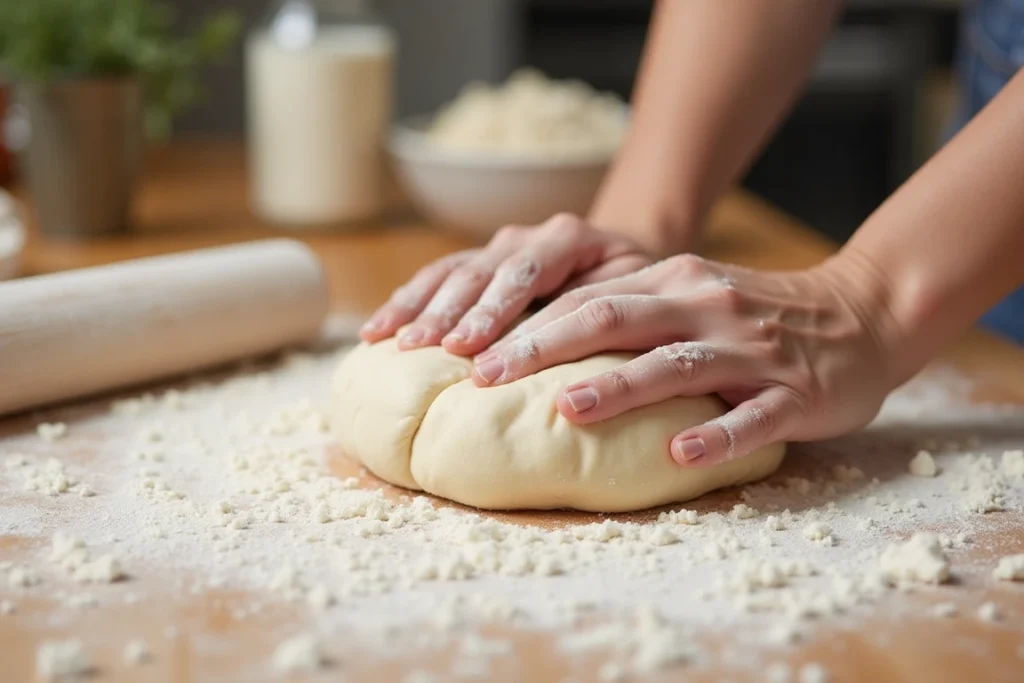
Resting and kneading are essential steps to make an ideal white bun
- Kneading :
- Creates the gluten network which gives the dough strength and elasticity.
- The dough is able to trap the yeast-generated gases and result in a fluffy and light texture.
- The dough that is well-kneaded should be soft and springy on the touch.
- Resting :
- The process of resting (proofing) gives the yeast time to ferment, which causes rising of the dough.
- This method enhances the development of flavor and creates a moist crumb structure.
- Properly rested dough will increase in size and will be much more easily shaped into buns.
The following steps will result in the creation of a delicious and well-structured dough, which is the basis for fluffy, soft white buns.
Shaping and Proofing
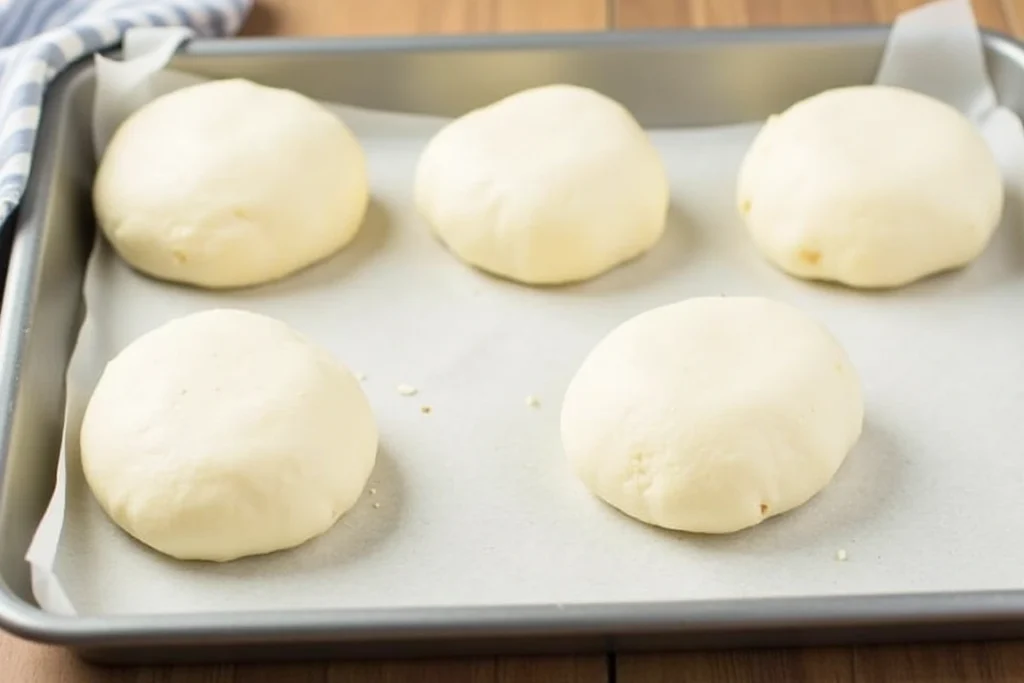
Techniques for Shaping Buns
The proper shaping of the dough will ensure uniform cooking and a pleasing final appearance. Here are the steps to follow:
- Dividing the dough Use an Kitchen scale for dividing the dough in equal parts, ensuring an even baking and uniform size.
- Pre-shaping Roll each piece into a rough ball, placing the edges under and creating tension on the surface to give a smooth surface.
- Final Shaping: Place the ball on a flat, smooth surface and gently roll it around in the direction of a circle using your fingers to secure the surface.
- The position: Set the buns with a shape on baking sheets or in steamers with enough space between them, allowing for expansion.
Ideal Proofing Conditions
Proofing gives the fluffy airy texture typical in white buns. It is essential to have the right conditions:
- temperature: Place it in warm area that is between 75degF and 85degF (24degC to 29degC). An oven that is slightly warmer or a a proofing box is ideal.
- Humidity: Keep a moderate level of humidity to keep your dough’s surfaces from drying. Cover the dough with a damp cloth or wrap in plastic.
- Timing Bake until your buns are doubled in size, usually 30 to 60 minutes, based on the temperature and activity of the yeast. Be careful not to overproof, because it could cause the buns to fall.
The art of shaping and proofing guarantees white buns that are fluffy, uniform and perfect every time.
Baking White Buns
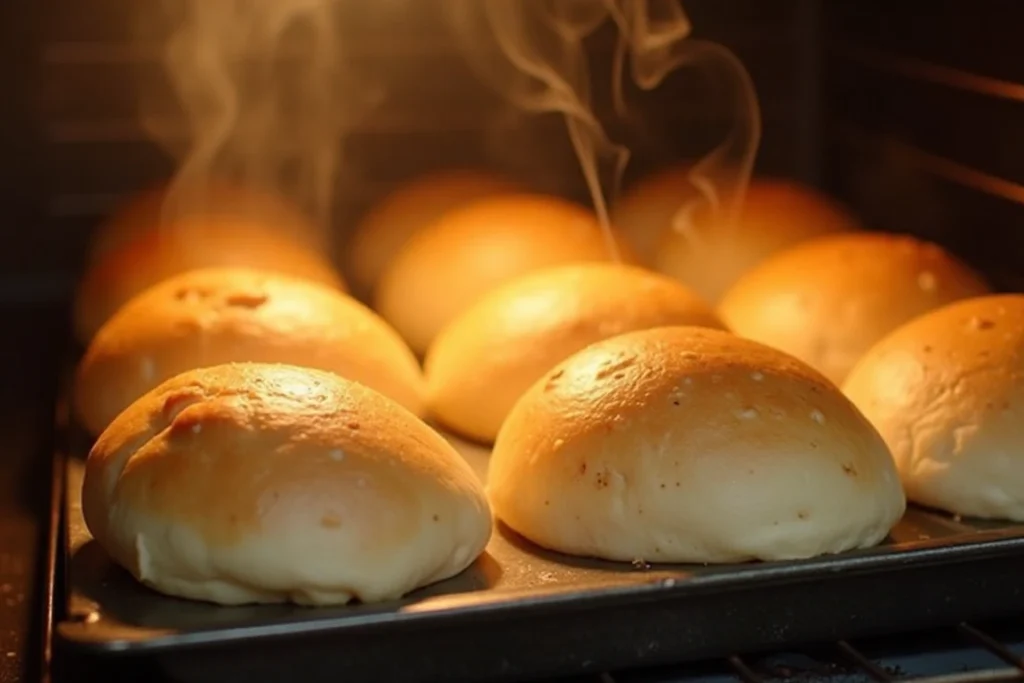
Temperature and Timing
The baking process is vital in ensuring that white buns are cooked to perfection with a soft and soft interior as well as an attractive golden exterior.
- Temperature: Preheat the oven to 375degF 400 degF (190degC between 200 and 190degC). This temperature range is sufficient that the buns will grow quickly when baked, and then develop an attractive golden crust.
- Timing Bake for 12-18 minutes, based on the dimensions of your buns. smaller buns may require less time, while bigger ones could require longer. Make sure they’re cooked by lightly tapping the top of the bun; a hollow sound means they’re ready.
How to Achieve the Perfect Crust
A crust that is well-crafted adds the flavor and aesthetic appeal of white buns. Here’s how to do the perfect crust:
- Egg wash Brush the tops of the cakes with a mix of beaten eggs and a little milk prior to baking. This will give you the appearance of a golden, shiny crust.
- Steam For soft buns, bake them in a pan of hot water in the oven, or mist them with water for the initial few minutes of baking to produce steam.
- Toppings Sprinkle poppy seeds, sesame seeds or coarse salt on buns after applying the egg wash to add flavor and texture.
Through controlling the baking temperatures, timings and final details, you’ll get white buns that have a beautiful golden crust and an extremely soft and fluffy inside.
Storage and Shelf Life
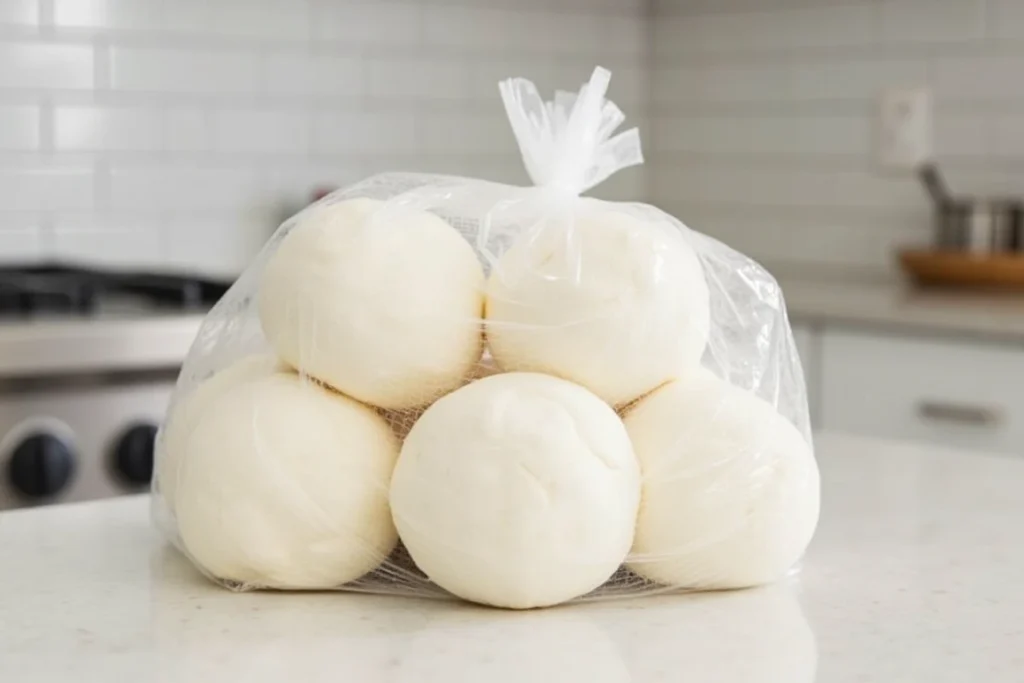
Proper Storage Methods
Properly storing white buns will help keep their flavor and softness intact:
- Room Temperature The buns should be placed inside an airtight container or a plastic bag to stop them from drying out. They can be stored in a cool, dry place for up to 3 days.
- Refrigeration: Although refrigeration may prolong shelf life but it could also make the breads dry. It is better to keep them at room temperature or even freeze them if the need for long-term storage arises.
How to Reheat or Freeze Buns
To enjoy white buns after the next day, reheating or freezing is a good idea. very well:
- Reheating :
- To make soft buns put them in foil and then bake their in the preheated baking oven at 350 degF (175degC) for 5 to 10 minutes.
- You can also microwave each bun for 10-20 seconds to revive their softness.
- Freezing :
- Let the buns cool completely before putting them into the freezer-safe container or bag. Mark the date on the label to make it easy to track.
- Buns may be kept in the freezer three months or more. Then, at room temperature, you can warm straight from the freezer in the oven covered in foil.
Follow these tips for storing and heating and tips, you’ll be able to take advantage of freshly baked white fluffy buns for a long time after they’ve been baked.
Frequently Asked Questions
What Makes White Buns Soft and Fluffy?
The softness and fluffyness of white buns result from the following factors:
- Hydration A good supply of milk or water helps keep your dough moist and supple.
- Fat ingredients like oil or butter help to soften the dough by restricting the growth of gluten.
- Kneading and proofing Properly kneading creates the gluten network. In addition, proper proofing allows the dough to rise, catching air and resulting in a soft texture.
Can I Use Gluten-Free Flour?
Yes it is possible to use gluten-free flour. However, the procedure and results will be different:
- Texture Gluten-free: Without it the dough’s elasticity is reduced which means that the buns might not rise as much, and might be less dense.
- Tips Make use of a gluten-free blend specially designed for bread. You can also add binders such as xanthan gum to replicate the effects of gluten. Alter the time of proofing and hydration depending on the needs.
How Long Does the Dough Take to Rise?
The duration of the rise depends on a variety of factors, including the temperature and yeast activity
- Standard Rise Times At the room temp. (75degF to 85degF, or 24degC-29degC) The dough typically takes about a day to increase in size.
- Cool Proofing When proofed in the fridge, the rise time could extend to 8-12 hours, which allows for a more intense flavor development.
Conclusion
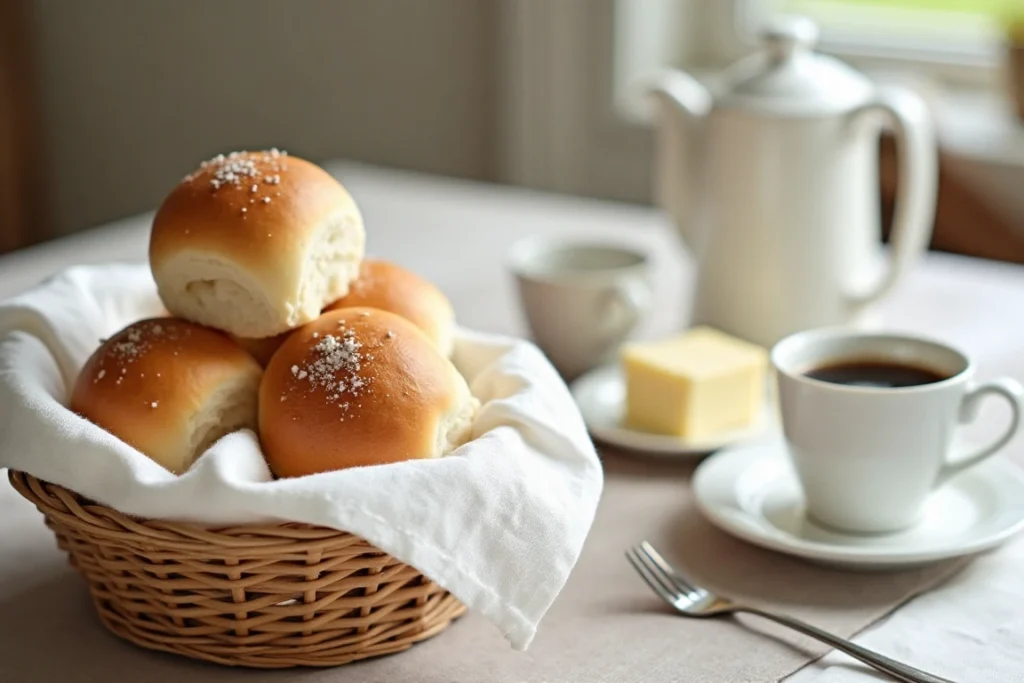
Recap of Essential Ingredients
White breads make a delicious mix of basic, but essential ingredients that combine to produce their delicate and fluffy appearance. Flour is the base and water helps to hydrate the dough, while yeast provides the lift. Sugar salt, salt, and fat improve the flavor and texture and optional ingredients such as eggs and milk enhance the flavor. Each component plays a crucial contribution to achieving the ideal balance of flavor, texture and structure.
Encouragement to Try Making White Buns at Home
Making white buns from scratch is an enjoyable experience which combines creativity with the delight of freshly baked outcomes. If you’re a fan of traditional recipes or are looking to play with herbs, seeds, and sweet toppings creating your own buns is a way to create unlimited variations. Following the steps laid out in this tutorial anyone can master the art of creating fluffy, delicious white buns. Try it out and you’ll discover that buns made from scratch aren’t only delicious, but they are also a cozy and satisfying accompaniment to any dinner.
